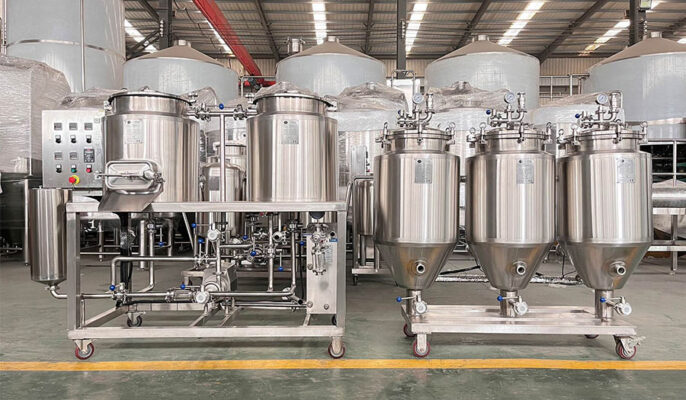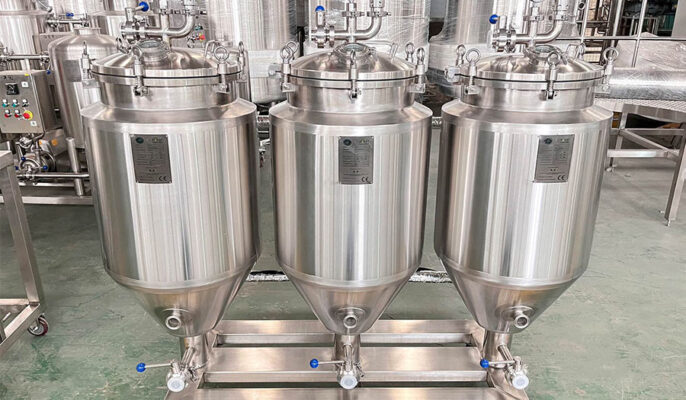Starting a nanobrewery is an important decision. Nanobreweries are small breweries that produce limited quantities of craft beer. These breweries often focus on unique craft beers and often serve the local market. Yet, many aspiring homebrewers may be wondering, can a nano brewery making small batches of beer make money? In this guide, we’ll explore it together.
What is a nano brewery?
Even smaller than a microbrewery, a nano brewery is a brewery or brewpub that produces less than 15,000 barrels of beer per year. The annual cap at the Nano level is defined than at other levels.
A New Hampshire law limits nano brewery production to 2,000 barrels per year, but not every state has such a law.
Nano breweries operate on a low budget and focus on creating unique, experimental beers. Some companies brew using a 1-barrel brewing system. Nano breweries may not be able to brew enough beer to survive. But, it can be used to turn your home brewing hobby into a small side hustle. Creating a nano brewery is of course the first step towards a commercial brewery.

How to start a nanobrewery?
Creating a business plan is an essential first step in starting a nanobrewery, and there are many things to keep in mind if you want to start a nanobrewery.
- Determine brewing goals
- Conduct market research
- Select brewery size
- Develop relevant business plans
- Understand local legal requirements and permits
- Procurement of necessary nano brewing equipment
Nano brewery equipment list
To start your nano brewery, you’ll need a variety of equipment to brew and package your beer. Necessary brewing equipment includes:
- Brewing kettle: used to boil wort, the liquid extracted during the mashing process.
- Mash tun: A vessel used to mix crushed grains with hot water to extract fermentable sugars.
- Fermenter: A container where wort and yeast are mixed for fermentation and sugar is converted into alcohol.
- Heat source: burner or electric heating element used to heat the brewing kettle.
- Cooling system: Wort cooler, used to cool the wort after boiling before transferring it to the fermenter.
- Disinfection and cleaning equipment: necessary to maintain hygiene and prevent contamination.
- Measurement and testing tools: hydrometer, thermometer, and pH meter for monitoring the brewing process.
- Bottling or kegging equipment: used to package finished beer.
Advantages and Disadvantages of Nanobrewery
Advantage
The advantage of Nano Brewing is that it can be opened or franchised in the local market as it requires only a small amount of capital, unlike other craft breweries where machinery is a must and access to a specific type of beer is also required. Machines required by commercial companies. For those planning to start this type of business, and for entrepreneurs who share the same interests as craft breweries, besides to generating profits for your recreational interests, you will also be branding your innovative work into the product.
After opening a nanobrewery business it can be a sole proprietorship which means you are the boss and everything about the business which is a great contract for yourself and the benefit of this is that you get it completely for your company’s profit. You don’t need to hire a large number of workers as it is easy to manage.
Shortcoming
The downside or shortcoming of being a small business is that the profits are slim. While you can try to innovate, profits in this type of business are limited. But since you have a limited workforce, you are also limited in what you can sell to the market.
Competitors are typical for such a small business. Some have reached a break-even point. But, they are more likely to get customers because they have already started the business and may have brought back profits. Too, labor, some people choose to reduce employment to reduce expenditures on workers’ wages. So, more labor produces fewer products.

The difference between nano brewery and microbrewery
Nano means one billionth, smaller than a micron. Nano beers are smaller than micro beers. Nano breweries are not allowed to produce a certain amount of beer before scaling up to micro.
There are no particular benefits to nano breweries compared to microbreweries, but there may be reasons for people to want to start a nano brewery. First, nano breweries are usually run by one person, who does everything.
Microbreweries represent an advancement in scale and output compared to nanobreweries. Small means one in a million. Small breweries are limited to producing no more than 15,000 barrels per year. The small brewery can only produce 465,000 gallons of beer. Small breweries have a wider reach and can distribute even beers based on demand.
Are nanobreweries profitable?
Nanobreweries target smaller, more localized groups of people (usually regional). Nanobreweries tend to focus on connectivity rather than large-scale supply. Because of this, nanobrewery is a very successful tour and tasting venue.
Some breweries can be profitable with nanobrewery systems under 300 liters. This depends on your break-even analysis. You need to make sure your revenue covers and exceeds your fixed and variable costs. This is cost vs. profit! When developing a business plan, you need to work out what your total revenue must be over a given period to ensure that expected costs are met and exceeded.
There are still strategies that nanobreweries can use to make money. One approach is to focus on selling beer to customers through a bar or tasting room. This eliminates the need to distribute beer to bars and restaurants, which can be expensive and time-consuming. Another approach is to create a strong brand image and build a loyal following through social media and marketing campaigns.




